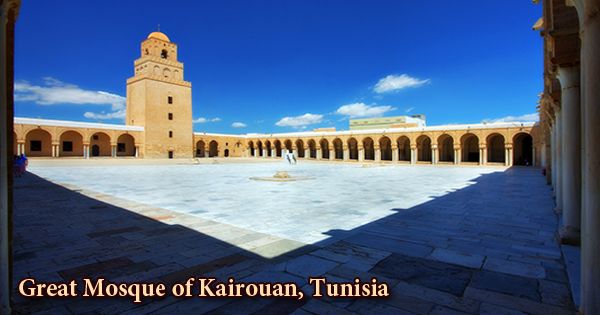A pyramid (from Greek: πυραμίς pyramís) is one of the most amazing and riveting structures of both ancient and modern history. It was a really difficult task for the architects to even think of such structures during that era. Pyramids have been built at various times in Egypt, Sudan, Ethiopia, western Asia, Greece, Cyprus, Italy, India, Thailand, Mexico, South America, and on some islands of the Pacific Ocean. Those of Egypt and of Central and South America are the best known.
The pyramids were built of limestone, granite, basalt, gypsum (mortar), and baked mud bricks. Limestone blocks were quarried at Giza and possibly other sites. Granite likely came from upriver at Aswan. Alabaster came from Luxor and basalt from the Fayoum depression. Iron tools were not available, so workers used copper and stone-cutting tools to carve out the blocks in the quarries. They then used levers to move the stone blocks away from the quarry site.
A pyramid’s design, with the majority of the weight closer to the ground, and with the pyramidion on top, means that less material higher up on the pyramid will be pushing down from above. This distribution of weight allowed early civilizations to create stable monumental structures. Civilizations in many parts of the world have built pyramids. The largest pyramid by volume is the Great Pyramid of Cholula, in the Mexican state of Puebla. For thousands of years, the largest structures on Earth were pyramids first the Red Pyramid in the Dashur Necropolis and then the Great Pyramid of Khufu, both in Egypt the latter is the only one of the Seven Wonders of the Ancient World still remaining.
Pyramids are the final resting place of the pharaoh. It was believed that after the death if a pharaoh’s body was destroyed then his Ka or soul would have nowhere to go. And if his Ka or soul dies then he wouldn’t be able to unite with the sun. This could make the almighty angry and it was also believed that they would no longer be able to protect the land as they used to. This was how the pyramids actually came into picture. Gradually this pyramids became the symbols of power, the power of the pharaoh to whom it belonged.
No one knows how laborers were able to get the 2.5-ton stone blocks from the quarries to the building site. Wheels wouldn’t have been useful on the desert sand and gravel, so they most likely dragged the blocks with wooden sleds and ropes. Some think that workers used quarter-circle wooden sleds that fit around a rectangular block. They attached the sleds to the block, and a crew of about eight men rolled them along the ground, much like rolling a keg of beer. Others say the laborers used wooden rollers. For long-distance transport, the blocks were loaded on barges and transported down the Nile. Workers dug canals to get the barges nearer to the site.
Egyptologists estimate that workers placed about 300 stones a day during pyramid construction. Several theories lever systems, ramps and kites, for example attempt to explain how the huge blocks got into place. Those in the know generally accept the ramp idea, but they debate the exact ramp configurations. The ramps could have been long and straight, perpendicular to the sides or wrapped around the core. While laborers placed stones in the core, stone cutters were making the chambers, passageways, and shafts in the pyramid’s interior. Artists inscribed the designs that adorned the chamber walls.
There were 138 pyramids that had been found till date. Most of them were built as tombs for the pharaohs and their wives during the old and middle age of the ancient Egyptian civilization. The first pyramid was found at Saqqara, located towards the north-west of Memphis. This pyramid was built for Pharoah Djoser by his vizier Imhotep, during the 27th century B.C. The Step pyramid represents the giant stairways for the king to climb and join the sun god in the sky.
Among American pyramids the best known include the Pyramid of the Sun and the Pyramid of the Moon at Teotihuacán in central Mexico, the Castillo at Chichén Itzá, and various Inca and Chimú structures in Andean settlements. American pyramids were generally built of earth and then faced with stone, and they are typically of stepped form and topped by a platform or temple structure. The Pyramid of the Sun, with base dimensions of 220 by 230 meters (722 by 755 feet), rivals in size the Great Pyramid of Khufu at Giza, which measures 230 square meters (2,476 square feet).
Constructions of the Pyramids with smooth and sloping sides, as we see today, were started during the reign of Pharaoh Sneferu. Each pyramid represents the agglomerate on which god Amun-Re stood to call other god and goddesses. These pyramids were built with granite walls. Winding passage and false doors were also incorporated in it. The main entrance to the tomb used to disguise the visitors in such a manner that it looked like the outer surface of the pyramid. This was done as a precaution to protect rich inhabitants who were buried along with the Pharaoh.
The Greek historian Herodotus described the building of Khufu’s pyramid by more than 100,000 slaves. Pyramid building stopped in Egypt long ago. When the Spanish conquered the Aztecs and Mayans, the Central American pyramids were abandoned in the jungles until archaeologists uncovered and studied them. Archaeological research continues on these structures today to resolve the many mysteries of how they were built. Nonetheless, millions of people continue to visit the pyramids each year, drawn by their towering grandeur and the enduring allure of Egypt’s rich and glorious past.
Information Source:
















